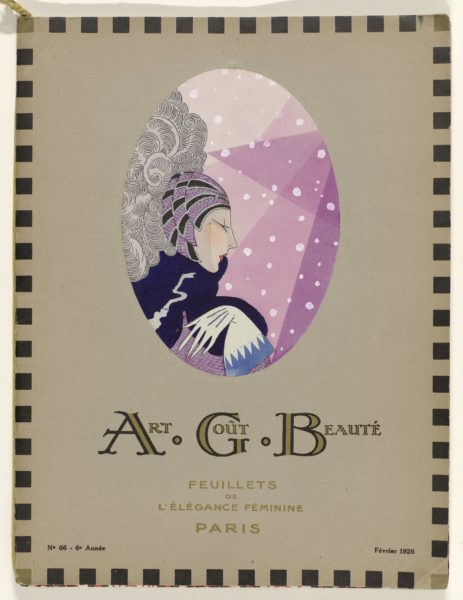The title of my blogpost is derived from a song by The Doors called “Wintertime Love,” released in 1968 on their album Waiting for the Sun. It is a favourite song of mine, as it always gets me in a wintery mood. Born in January, I have always been fond of the winter season – even more so after living in Norway for two years. I enjoy winter wear and I spend time knitting myself warm jumpers throughout the year, mainly using old patterns from the 1940s and 1950s. I love the view of mountaintops covered in snow, and enjoy going snowboarding whenever I can. However, I was born in the wrong place, as the Netherlands is a very flat country. Sadly, the wintery ice skating scenes with warmly-dressed-up people, known from oil paintings such as Hendrick Avercamp’s Winter Landscape with Ice Skaters (c. 1608), have also become a rare sight.
Therefore, this Christmas break I will dream away to the above illustration of a woman set against the backdrop of falling snow. It is winter, 1926. The woman is depicted in profile in a stylised manner. Her head is fashionably covered. She sports a dark blue shawl and white gloves with a light blue trimming; all to protect her from the cold winter weather.
This elegant illustration is from the cover of the February 1926 issue of Art-Goût-Beauté Feuillets de L’Élégance Féminine, a fashion periodical published in Paris between November 1921 and 1933. The successor of a short-lived magazine called Succès d’Art Goût Bon Ton, the magazine derived its initials from Albert Godde Beddin et Cie, a textile manufacturer and publisher established in Lyon in 1867. The decorative endleaves of the magazine originate from textile designs of this company, with the name and number of each pattern noted in a small inset.
Each page of Art-Goût-Beauté is a delight to look at. The magazine’s title, which translates to ‘Art, Good Taste, Beauty, Pages of Feminine Elegance,’ signals the magazine’s coverage of elegant and luxurious creations of Parisian couturiers, such as Drecoll, Patou, Poiret and Worth. Using the highly refined, hand-stencilling and painting technique known as pochoir, Art-Goût-Beauté brought these couturiers’ fashions to the contemporary reader seeking the latest fashion inspiration and advice.

Winter Wear: From Active Sportswear to Festive Evening Wear
For instance, in its January 1924 issue, Art-Goût-Beauté mentions the pleasures of winter sports such as luging, skiing, and bobsleighing for dauntless sportswomen. Moreover, an advertisement for Tunmer in its Christmas 1928 issue depicts ensembles appropriate for ice skating and skiing.
The magazine stresses that the sporty 1920s women can still find a way to look nice both outside in the wintry landscape and in the cozy indoors. For example, they might change their sportswear for a more formal evening look, such as ‘Gabette’ by Jean Patou, or ‘Grande Passion’ by Gustav Beer pictured below. The latter, a black and beige dress with flounces, is made of fabric from Albert Godde Beddin et Cie.

Find more of these beautiful fashion illustrations from Art-Goût-Beauté via “Rijksstudio”, the online database of the collection of Rijksmuseum, Amsterdam.
By Nelleke Honcoop
Sources:
Retrieved via “Rijksstudio”, Rijksmuseum, Amsterdam, https://www.rijksmuseum.nl/en/rijksstudio.
For further reading on pochoir:
Calahan, April, and Cassidy Zachary. Fashion and the Art of Pochoir: The Golden Age of Illustration in Paris. Thames & Hudson, 2015.






























